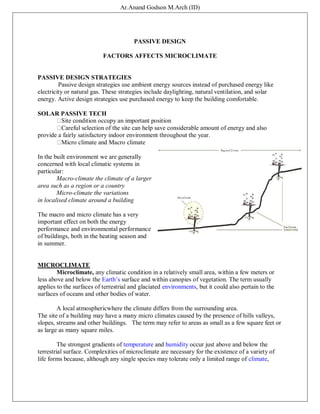Passive design strategies use ambient energy sources instead of purchased energy. Microclimates are affected by topography, soil, water, vegetation, and artificial structures. The macroclimate of a larger region influences building design, while microclimates are more localized climates impacted by a building's site conditions. Factors like land form, water bodies, and vegetation type and patterns can impact microclimates and should be considered in building design.










